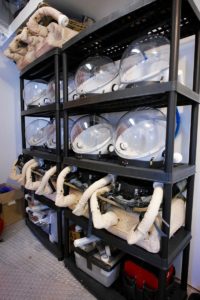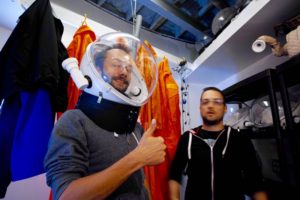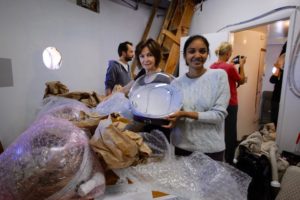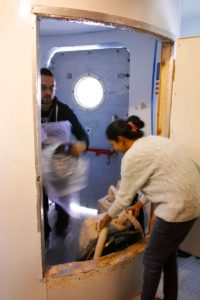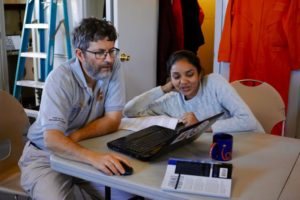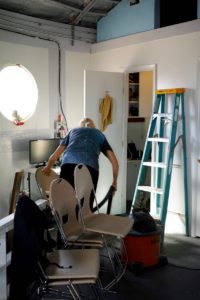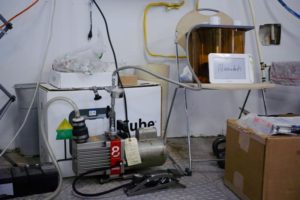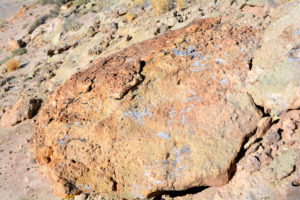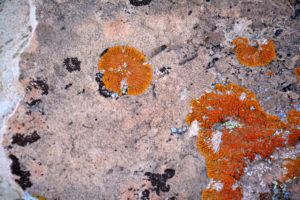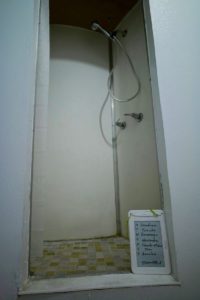Lichen Biodiversity Investigation: Implications for Future Manned Astrobiological Exploration of Mars
By Anushree Srivastava – Crew Biologist
“One could speculate that lichens would be among the last inhabitants to succumb on a dying earth at some distant point in the future.”
― Steven L. Stephenson, The Kingdom Fungi: The Biology of Mushrooms, Molds, and Lichens
Lichens – a diverse and unusual group of organisms – form an intimate symbiosis with two very different species fungi (mycobionts) and algae (photobionts) or cyanobacteria and are found in nearly all terrestrial habitats ranging from equatorial (hot) to Polar (cold) regions. Fungus belongs to the Kingdom Fungi, are ecologically significant as they are integral for the survival and maintenance of the surrounding ecosystem by establishing a symbiosis with plants and trees for the uptake of nutrition and facilitating survival. Fungi are commonly known for their ability to break down organic matter and resort to other organisms to obtain nutrition since they do not produce their own food. On the other hand, a separate Kingdom Algae are the group of diverse aquatic organisms that are capable of photosynthesis and survive in almost any environment when associated with lichens.
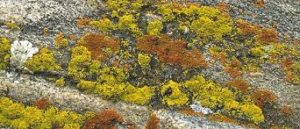
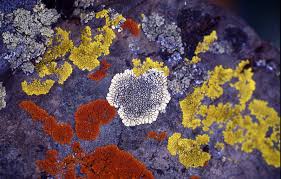
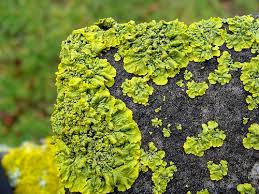
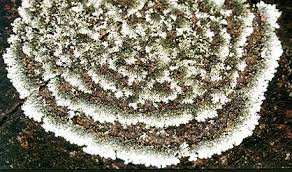
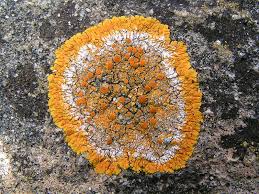
Fig. 1 (a, b, c, d, e) Different species of Lichen

Fig 2. Lichen morphology. Credit: Roger Rosentreter, Mathew Bowker, Jayne Belnap (From – A field Guide to Biological Crusts of Western U.S. Drylands. Common Lichens and Bryophytes.)
Lichens have displayed an immense potential of surviving extreme conditions and adaptation in the simulated Martian conditions in previous studies. Scientists at the German Aerospace Center’s Institute of Planetary Research in Berlin, Germany, have studied the survival potential of lichens in Mars-like conditions. They found lichen survived temperatures as low as -510 C, high bombardment of Ultra Violet radiation for a long time as well as having the excellent physiological adaptation in extreme Martian conditions when residing inside microhabitats of cracks in Martian rocks and in turn shielded from radiation. European scientists collected lichen samples from Sierra de Gredos (Spain) and the Alps (Austria) and sent them to International Space Station (ISS) to examine the likelihood of their survivability on Mars. Scientists retrieved viable DNA of lichens even after 18 months of exposure to space conditions. Additionally, the vast majority of lichens are tolerant to desiccated conditions and characterised by acquiring adaptations in response to the environmental stress by altering photosynthetic process and physiological activity and represent a dominant life-form in hostile conditions which no higher plant can sustain.
According to MARS 160 Crew Geologist Dr Jonathan Clarke – Lichens are valuable for Mars analogue research in several ways. Firstly, they represent the kind of communities that might have existed on Mars in the past, when conditions may have been warmer, wetter and of a higher atmospheric pressure. Secondly, at a macroscopic scale, they show the same type of response to the influence of microenvironments, nutrients, and other factors as are seen at the microscopic level, and can serve as tools for understanding life in extreme environments. Lastly, lichens, because of their role in colonising extreme environments, have played a significant role in the evolution of the terrestrial biosphere of planet Earth, and are therefore of intrinsic interests to astrobiologists.
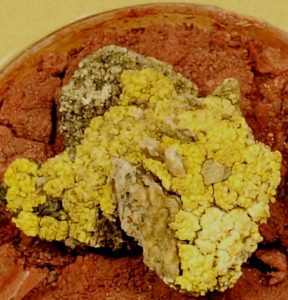
OLYMPUS DIGITAL CAMERA
Fig 3. P. chlorophanum (Lichen) on S-MRS Mars-analog substrate. Credit: German Aerospace Center’s Institute of Planetary Research
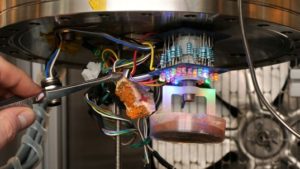
Fig 4. Chamber used for simulating conditions on the Martian surface. Credit: DLR
Investigation of lichen biodiversity due to their capability of surviving harsh environmental conditions is important in extreme environments which are considered planetary exploration analogs. Mars Desert Research Station (MDRS) is one of those Mars analog research sites located in the desert and represent an ideal environment for astrobiological exploration. MDRS has been the hub of astrobiological research for exploration of extremophiles and biosignatures. At MDRS lichens have been found to be strongly bonded to rocks and soil partnering with algae and fungi. Therefore, characterising the lichen community in the vicinity of MDRS in full simulation suit gives the opportunity to understand their diversity and survivability under Mars-like conditions. Multiple lichen species have been documented by biologists during previous MDRS rotations and MARS 160 mission will undoubtedly build upon the insights have already been gained on lichen biodiversity surveys and mapping!
“Of what a strange nature is knowledge! It clings to the mind, when it has once seized on it, like lichen on the rock” – Frankenstein
Further Readings:
Barrett, P.E. and Thomson, J.W., 1975. Lichens from a High Arctic Coastal Lowland, Devon Island, NWT. Bryologist, pp.160-167.
Jean-Pierre de Vera, Dirk Schulze-Makuchb, Afshin Khanb, Andreas Loreka, Alexander Koncza, Diedrich Möhlmanna, Tilman Spohna. 2014. Adaptation of an Antarctic lichen to Martian niche conditions can occur within 34 days. Planetary evolution and life. 98: 182–190
Sancho, L.G., De la Torre, R., Horneck, G., Ascaso, C., de los Rios, A., Pintado, A., Wierzchos, J. and Schuster, M., 2007. Lichens survive in space: results from the 2005 LICHENS experiment. Astrobiology, 7(3), pp.443-454.
Silvano Onofri, Jean-Pierre de Vera, Laura Zucconi, Laura Selbmann, Giuliano Scalzi, Kasthuri J. Venkateswaran, Elke Rabbow, Rosa de la Torre, Gerda Horneck. 2015. “Survival of Antarctic Cryptoendolithic Fungi in Simulated Martian Conditions On Board the International Space Station”. Astrobiology 15(12): 1052-9
Sokoloff, P.C, Freebury, C.E., Hamilton, P.B., and Saarela, J.M. 2016. The “Martian” flora: new collections of vascular plants, lichens, fungi, algae, and cyanobacteria from the Mars Desert Research Station, Utah. Biodiversity Data Journal 4: e8176. doi: 10.3897/BDJ.4.e8176




